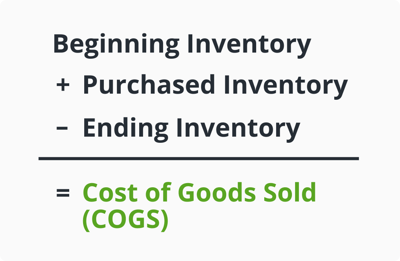In the foodservice industry, cost of goods sold (COGS) is one of the most important metrics that restaurateurs should constantly measure. Efficiently controlling and calculating COGS allows restaurateurs to reduce costs and maximize profits.
In this post, we'll explain what you need to know about COGS in the hospitality industry and how to optimize it.
What is cost of goods sold?
Cost of goods sold is a metric in the foodservice industry that shows the ratio between the purchased goods and the total revenue. This value includes all costs of the ingredients used for the preparation of food and beverages.
COGS is a significant cost factor and can account for a substantial portion of a business's total expenses. For this reason, efficient control of cost of goods sold is crucial to ensure profitability.
For example, a high cost of goods sold may indicate that the procurement costs are too high or that the selling price of food and beverages is set too low. A low COGS, in contrast, may suggest that the company effectively controls its cost of goods and efficiently manages its resources.
How to calculate cost of goods sold for restaurants
Typically, cost of goods sold for restaurants is expressed as a percentage. To calculate COGS, you need to first determine the use of goods by recording all purchases within a specific period (e.g. purchases in a fiscal year).
Taking into account the purchased inventory, the inventory at the beginning and end of a certain period are compared. This results in the following formula:
Cost of Goods Sold (COGS) = Beginning Inventory + Purchased Inventory – Ending Inventory

Now, you calculate the total net revenue during the same period. Using this amount and COGS, you can determine cost of goods sold percentage:
COGS Percentage = COGS in $ x 100 / Net Revenue in $

Let's say that you purchased goods worth a total of $5,000 during one month and generated sales of $18,000. This results in COGS percentage of approximately 28 %.
Factors that influence your COGS
Even though COGS percentage in the restaurant industry can vary depending on the type of business, the average value is typically between 20 % and 30 %. To optimize cost of goods sold, it is helpful to look at the individual processes that can affect the value.
Purchasing prices
The prices at which you purchase your goods have a direct impact on your COGS. If the prices for certain ingredients increase, for example due to seasonal fluctuations or political events, cost of goods sold also increases.
In order to buy your goods at the best price, you should constantly compare the market offerings from different suppliers and negotiate good conditions or special offers.
Food waste
When food goes to waste, the associated costs are lost. Spoilage, overproduction in the kitchen, or improper storage of goods are some reasons why food must be discarded in restaurants. This results in higher COGS, as the expenses for this wasted food is not covered by the sale or processing of the products.

Portion sizes
If the portion sizes of your dishes are not appropriately and accurately calculated, this can lead to increased consumption of ingredients and drive up the cost of goods. Therefore, it is necessary to adhere to the specifications of the recipes and adjust them regularly to ensure optimal cost control.

Inventory management
Efficient inventory management is crucial for accurately calculating cost of goods sold. You should ensure that you have enough inventory on hand without tying up too much capital. Regular inventory checks help you maintain an overview of your current stock, preventing empty shelves, avoiding overstock, and reducing food waste.
Menu
The composition and prices of the dishes on your menu also have an impact on your cost of goods sold. Dishes with expensive ingredients or those that require complex preparation can increase your COGS.
Theft and losses
When theft occurs in your restaurant by your own employees, it results in a direct loss of goods. Implementing security measures and systematic controls can help minimize these losses.
Useful software for better cost control
As you've seen, there are various factors related to optimizing cost of goods sold in the foodservice industry. An ERP system can provide significant support in maintaining an overview of all processes and controlling costs. With a digital tool like FoodNotify, you can create recipes for your dishes with all the specific data, automatically receive updated cost of goods sold, and always stay informed about real-time inventory levels.

How optimized COGS leads to profit
Efficiently controlling cost of goods sold is critical to increasing profitability and ensuring long-term success in foodservice operations. Whether you work with lower-cost suppliers, adjust portion sizes, or use a digital system, there are several ways you can optimize your COGS and reduce your costs while maximizing your profits.